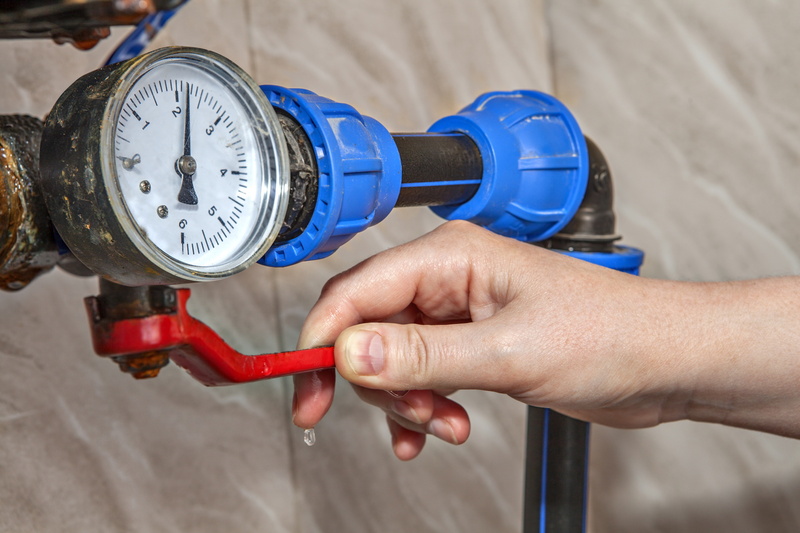
Think fast! Your reverse osmosis system just broke. Water is flooding all over your kitchen and spreading across the home. What do you do?
Hopefully, you would rush to the shut-off valve and turn off the water. But if you’ve never had the pleasure of having to use the shut-off valve before, it would be easy to panic and not know what to do.
In this post, we want to talk about two plumbing fixtures that are essential for emergencies. One is the water meter, and the other is the shut-off valve.
How to Find and Read the Water Meter
If you suspect a leak, the first place you should check is your water meter. If you don’t know what the water meter is, you might be able to guess that it’s a tool that measures the amount of water flowing through your home. Here’s what you should do if you suspect a leak:
- Ensure that no water is being used in your house. That doesn’t mean you have to go turn those appliances off—just ensure that everyone knows not to use them in the minutes leading up to the test.
- Check your meter to see if the indicator is moving. Some meters might show a dial or a rotating wheel. Either way, a moving meter means that water is moving, too.
- You can then wait between 1 and 2 hours (still making sure not to use any water!) and double-check it to confirm.
Finding the water meter is going to vary depending on the household, but it shouldn’t be difficult. Try these two common areas:
- Near the curb in front of your house. It will likely be contained in a box with a concrete or iron lid, which you can remove with a large screwdriver (watch out for spiders)!
- Alternatively, it might be inside the home, such as in a basement.
If you’re still having trouble, don’t hesitate to call up a plumber in Clifton, NJ to find out for sure.
The Location of the Shut-Off Valve
So, if you’ve confirmed that you have a leak, you’ll want to know where the shut-off valve. That will cut off the flow of water into your home and stop the leak from incurring more expenses.
Likewise, if there’s a flood in your home—such as that from a broken toilet or reverse osmosis system—you should rush to the shut-off valve immediately. You’ll have no time to waste, so it helps to know exactly where yours is located.
Fortunately, shut-off valves are typically located right next to the water meter, so it shouldn’t be hard to find. However, that’s not a guarantee—you should check to make sure that it’s not located separately.
Keep in mind that automatic shut-off valves also exist. This is a device that will be able to detect changes in water pressure, like that felt from a leak or burst. The valve will automatically shut off even if you’re away on vacation.
Have more questions about your plumbing system? Contact MarGo Plumbing Heating Cooling Inc. today to speak with an expert.
